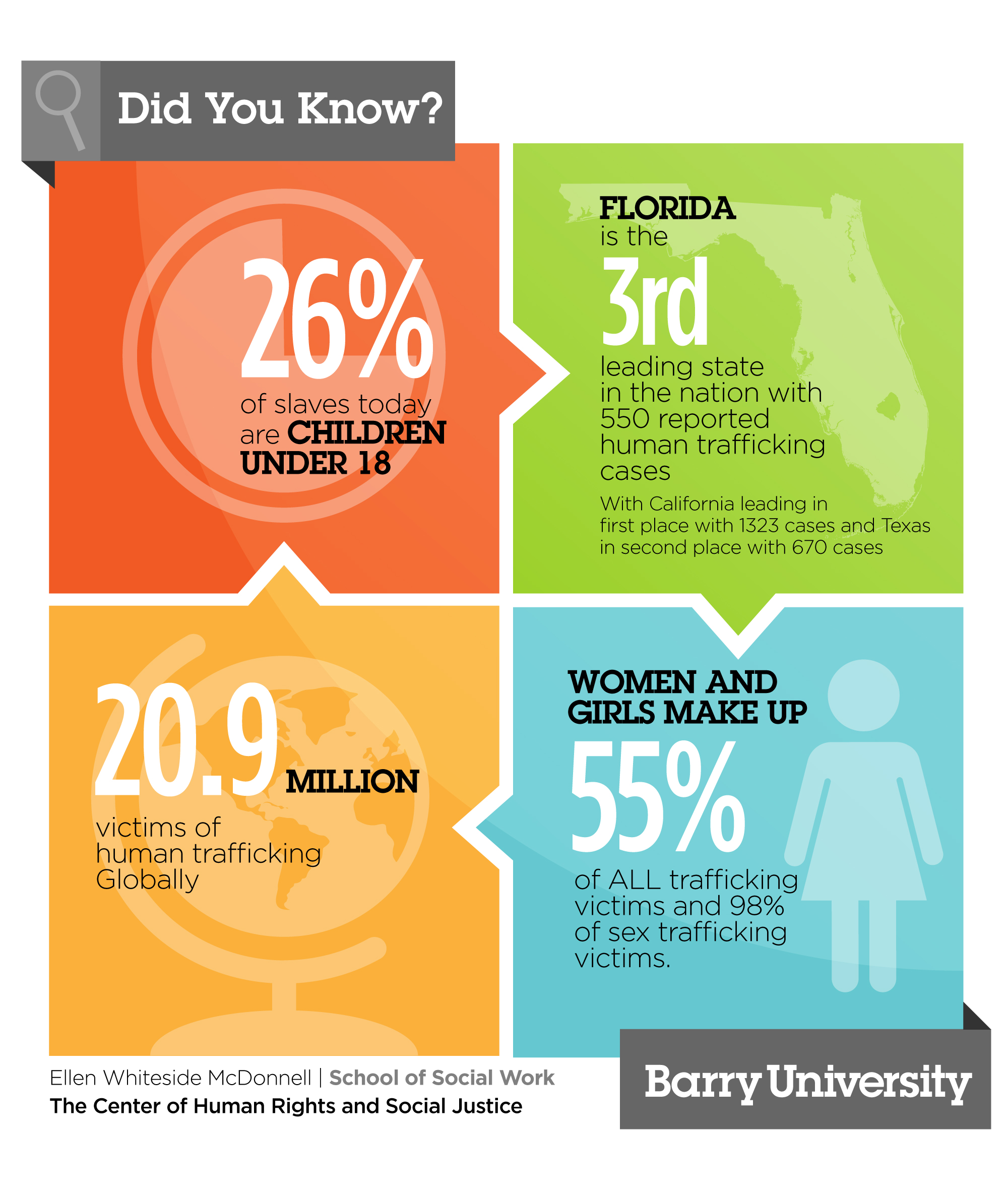Human Trafficking Prevention
Federal Law
The Trafficking Victims Protection Act of 2000 (TVPA) defines "severe forms of human trafficking" as: The recruitment, harboring, transportation, provision, or obtaining of a person for
sex trafficking in which a commercial sex act is induced by force, fraud, or coercion, or in which the person induced to perform such act has not attained 18 years of age; or
labor or services, through the use of force, fraud, or coercion for the purpose of subjection to involuntary servitude, peonage, debt bondage, or slavery
Florida Law
Florida law defines human trafficking as a form of modern-day slavery. Victims of human trafficking are young children, teenagers, and adults. Thousands of victims are trafficked annually across international borders worldwide. Many of these victims are trafficked into this state. Victims of human trafficking also include citizens of the United States and those persons trafficked domestically within the borders of the United States. The Legislature finds that victims of human trafficking are subjected to force, fraud, or coercion for the purpose of sexual exploitation or forced labor.
Signs of Human Trafficking
According to the Polaris Project, signs of human trafficking can include:
Poor Mental Health or Abnormal Behavior
Is fearful, anxious, depressed, submissive, tense, or nervous/paranoid
Exhibits unusually fearful or anxious behavior after bringing up law enforcement or immigration officials
Shows signs of substance use or addiction
Poor Physical Health
Shows signs of poor hygiene, malnourishment, and/or fatigue
Shows signs of physical and/or sexual abuse, physical restraint, confinement, or torture
Lack of Control
Has few or no personal possessions
Is frequently monitored
Is not in control of his/her own money, no financial records, or bank account
Is not in control of his/her own identification documents (ID or passport)
Is not allowed or able to speak for themselves (a third party may insist on being present and/or translating)
Other
Claims of just visiting and inability to clarify where they are staying/address
Lack of knowledge of whereabouts and/or do not know what city he/she is in
Appear to have lost sense of time
Shares scripted, confusing, or inconsistent stories
Protects the person who may be hurting them or minimizes abuse
This list is not exhaustive and represents only a selection of possible indicators. The red flags in this list may not be present in all trafficking cases. Each individual indicator should be taken in context, not be considered in isolation, nor should be taken as “proof” that human trafficking is occurring. Additionally, cultural differences should also be considered.
The Learn the Signs of Human Trafficking video also provides additional insight into what to look for in victims of human trafficking.
Statistics

